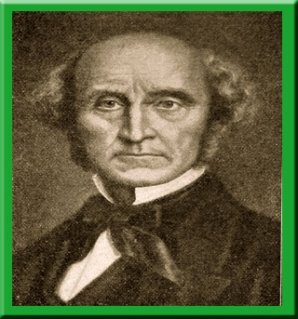The Article 7 of the Treaty establishing the European Community (TEC) identified five main European institutions such as the European Council, the Council of Ministers, the European Commission, the European Parliament and the European Court of Justice. The European Union, established by the Treaty, is based on three pillars. The first pillar is the European community, where community law applies and where the European court of Justice (ECJ) plays an important role. The second pillar is the common Foreign and Security Policy (CFSP). The third pillar is the Justice and Home Affairs (JHA). Among them, European Court of Justice (ECJ) is the key institution that enforces EU legislation to make sure EU law is not interpreted and applied differently in each member state.
According to TEC Article 220, the court's principal purpose is ' to ensure that in the interpretation and application of the law is observed'. The member states are bound by the common law including primary and secondary legislation. The original treaties, the treaties of accession, and amendments constitute the 'primary legislation', whereas laws made in accordance with the treaties constitute the treaties constitute the 'secondary legislation'.
The court consists of 16 judges and nine advocates general, which sits in Luxembourg. They are appointed by the Common Accord of the governments of each member state for six years. The judges select one of them to be president for three years. The court is allowed to form chambers of three or five judges to hear individual cases. The court's rules of procedure determine where cases are heard and the court hears cases two days a week.
The court also developed two principal rules such as direct effect and supremacy. The provisions of community law are directly applicable, conferring enforceable rights on individuals and legal persons. National courts must protect these rights without any need for implementing legislation. The concept of direct effect of the provisions of the Treaty was developed by the ECJ in case 26/62, Van Gend en Loos V Nederlandse Administratie der Belastingen (1963).
The court also stated the conditions for a Treaty article to be directly applicable that it must be unconditional and unqualified and sufficiently precise and clear. Moreover, EU's legislation affects the interpretation of national law. In the case of Costa V ENEL (1964), the court stated that member states had definitely transferred sovereign rights to the community and that community law could not be overridden by domestic legal provisions with the legal basis of the community itself being called into question. Later, the court expanded its power in the case of Simmenthal V Commission (1978) that 'every national court must apply community law in its entirety [---] and must accordingly set aside any provisions of national law which may conflict with it'. In these cases, the court established the twin principles of direct effect and supremacy of community law.
In the elaboration of direct effect and supremacy have proved decisive in helping to achieve the EU's economic and social goals, namely,
freedom of establishment- Reyners (1974) case
free movement of goods- Cassos de Dijon (1979) case
freedom to provide services- Vereniging Bond Van Adverteerders V. The Netherlands State (1988) case
competition policy
social policy- Defrenne (1971) case and
external economic relations- ERTA (1976) case
The success of community law depends to a great extent on the willingness of national courts to seek preliminary rulings and abide by them. Under Article 234 TEC, if an individual argues before a national court that a national law or policy conflicts with EC law, and if the court is unable or unwilling to resolve the dispute based on previous EC case law, the court may seek 'authoritative guidance' from the ECJ by making a preliminary ruling reference (request).
Within the European Union, the ECJ plays an important role that affect the nature of the European governance. Bromley (2001) categorised the European governance into two different models such as intergovernmentalism and supranationalism. Intergovernmentalism enables member states to pursue their own national interests and exercise a veto on developments they do not favor. Supranationalism limits their ability to exercise a national veto and obliges them to follow decisions supported by a majority or qualified majority of their fellow member states'. He mentioned that the formation of major legislation has been by intergovernmental means but the implementation and enforcement of treaties has been by supranational means. Marks (1996) also recognizes that 'Supranational institutions- European Commission, the European Court, and the European Parliament- have independent influence in policy making that cannot be derived from their role as agents of state executives”.
Furthermore, Bromley (2001) distinguished the key institutions of EU based on those two models, as like 'the main supranational institutions are the commission, the Parliament and the Court of Justice. The main intergovernmental institutions are the European Council and the Council of Ministers. So it is obvious that the ECJ has jurisdiction over supranational policies and not over the intergovernmental policies.
In practice, intergovernmentalism and supranationalism are not irreconcilable, they jointly characterize EU system. The commission has only a modicum of supranational authority. The ECJ has a unique relationship with the European commission. They work together to promote economic integration by using competitive policy instruments and infringement proceedings. The single European Act (SEA) of 1986 is a striking example of how member states reconcile intergovernmentalism and supranationalism in relation to the EU's functional scope and institutional structure.
Similarly, the court shared a common supranationalist outlook with the European Parliament (EP). In the case of Isoglucose case, the court has generally promoted the EP's institutional interests. In the case of Chernobyl (1990), the court ruled that the EP should have the right to take action against Council and Commission acts in cases including parliamentary prerogatives in order to ensure institutional equilibrium in the post- SEA (Single European Act) period.
Institutionally, the European Council upholds national interest in the EU system, whereas the court upholds supranationalism. Somethimmes the court's liberal interpretation of the treaties in order to deepen economic and political integration has angered the council as well as the member states. For example. The ECJ came under criticism from the German governmment for some preliminary rulings protecting the rights of Italian and non EU migrants in the early 1990s. The criticism emphasized on the right of lower national courts to ask the ECJ for preliminary rulings, the fundamental principal of EC law.
In his writings, Hix (1999) identified five types of policy output produced by the political system of the EU such as regulatory policies, redistributive polices, citizen polices, macroeconomic stabilization polices and global polices. The community legal order is the main resource for the regulatory polices of the EU. The ECJ plays the role as a hero by developing this community legal order, which emerged through treaties and directives.
In the eyes of both member states and societal actors, the character of legal order and its growing legitimacy can be seen as the constitutionalization. Bormley (2001) analyzed that a constitutionalized legal order was both a logical prerequisite for the emergence of a regulatory order in EU and a vital component of the political process. Wincott mentioned that the community legal order developed as the ECJ necame able to promulgate the doctrines of direct effect and the supremacy of European law in relation to the national laws of member states.
The ECJ also pointed out that Treaty provisions and directives are directly effective, as well as regulations and that in cases of conflict European law has supremacy over national law. These represent the underlying principles in federalism. At the 1996-1997 Intergovernmental Conference (IGC), the Factirtame and other judgments led British government to propose some measures to curb the ECJ's effectiveness. If fueled speculation that ECJ's prerogatives seriously curtailed in the Amsterdam treaty. In this event, most member states wer too appreciative of ECJ's overall importance to reduce its rile in the EU system, and there were no fundamental challenges to the basic tenets of the EC law. This treaty brought mostly third pillar to first pillar and extended judicial review to what remains of the third pillar, not to the second pollar because of the nondiscrimination clause.
In conclusion, it could be asserted that the European law and the EU's legal structures are responsible for the EU's supranational legal system and have a major impact on the political spheres of the EU's governance.
Khin Ma Ma Myo (2006)
References
Bromley, S. (2001) 'Governing European Union', SAGE, London
Dinan, D. (1999) 'Ever Closer Union', Macmillan
Groves, P. (1995) 'European Community Law', Cavendish, London
Marks, G. (1996) 'Governance in the European Union', SAGE, New York
Wincott, D. (2000) 'A community of Law? 'European' law and judicial politics: the court of Justice and beyond', Government and Opposition, Vol. 35
Weiler (1981)' The community system:The Dual character of supranationalism'
ဘေလာ့ လိပ္စာသစ္သို႕ ေျပာင္းေရႊ႕ျခင္း
(၂၀၀၇) ခုႏွစ္မွစ၍ ဘေလာ့စာမ်က္ႏွာအား ဖြင့္လွစ္ခဲ့ရာ ဖတ္ရွဳအားေပးၾကေသာ စာဖတ္ပရိသတ္အေပါင္းအား အထူးပင္ ေက်းဇူးတင္ရွိပါသည္။
ယခုအခါတြင္ ဘေလာ့ကို ဖြင့္ရန္ အခ်ိန္ၾကာျမင့္မွဳမ်ား ရွိေနေၾကာင္း၊ စာဖတ္သူအခ်ိဳ႕မွ အေၾကာင္းၾကားလာပါသျဖင့္ www.khinmamamyo.info တြင္ စာမ်က္ႏွာသစ္ကို ဖြင့္လွစ္ထားပါသည္။
စာမ်က္ႏွာသစ္တြင္ အခ်ိဳ႕ေသာ စစ္ေရး၊ ႏိုင္ငံေရး၊ စီးပြားေရး၊ ပညာေရး၊ က်န္းမာေရးဆိုင္ရာ ေဆာင္ပါးမ်ားႏွင့္ ရသစာစုမ်ား (ႏွစ္ရာေက်ာ္ခန္႕)ကိုလည္း က႑မ်ားခြဲ၍ ျပန္လည္ေဖာ္ျပထားပါသည္။
ယခုဘေလာ့စာမ်က္ႏွာကို ဆက္လက္ထားရွိထားမည္ျဖစ္ေသာ္လည္း ယေန႕မွစ၍ ပို႕စ္အသစ္မ်ား ထပ္မံ တင္ေတာ့မည္ မဟုတ္ပါေၾကာင္းႏွင့္ ပို႕စ္အသစ္မ်ားကို စာမ်က္ႏွာသစ္တြင္သာ တင္ေတာ့မည္ျဖစ္ပါေၾကာင္း ေလးစားစြာ အသိေပး အေၾကာင္းၾကားပါသည္။
စာမ်က္ႏွာသစ္သို႕ အလည္လာေရာက္ပါရန္ကိုလဲ လွိဳက္လွဲစြာ ဖိတ္ေခၚအပ္ပါသည္။
ေလးစားစြာျဖင့္
ခင္မမမ်ိဳး (၁၇၊ ၁၀၊ ၂၀၁၁)
www.khinmamamyo.info
ယခုအခါတြင္ ဘေလာ့ကို ဖြင့္ရန္ အခ်ိန္ၾကာျမင့္မွဳမ်ား ရွိေနေၾကာင္း၊ စာဖတ္သူအခ်ိဳ႕မွ အေၾကာင္းၾကားလာပါသျဖင့္ www.khinmamamyo.info တြင္ စာမ်က္ႏွာသစ္ကို ဖြင့္လွစ္ထားပါသည္။
စာမ်က္ႏွာသစ္တြင္ အခ်ိဳ႕ေသာ စစ္ေရး၊ ႏိုင္ငံေရး၊ စီးပြားေရး၊ ပညာေရး၊ က်န္းမာေရးဆိုင္ရာ ေဆာင္ပါးမ်ားႏွင့္ ရသစာစုမ်ား (ႏွစ္ရာေက်ာ္ခန္႕)ကိုလည္း က႑မ်ားခြဲ၍ ျပန္လည္ေဖာ္ျပထားပါသည္။
ယခုဘေလာ့စာမ်က္ႏွာကို ဆက္လက္ထားရွိထားမည္ျဖစ္ေသာ္လည္း ယေန႕မွစ၍ ပို႕စ္အသစ္မ်ား ထပ္မံ တင္ေတာ့မည္ မဟုတ္ပါေၾကာင္းႏွင့္ ပို႕စ္အသစ္မ်ားကို စာမ်က္ႏွာသစ္တြင္သာ တင္ေတာ့မည္ျဖစ္ပါေၾကာင္း ေလးစားစြာ အသိေပး အေၾကာင္းၾကားပါသည္။
စာမ်က္ႏွာသစ္သို႕ အလည္လာေရာက္ပါရန္ကိုလဲ လွိဳက္လွဲစြာ ဖိတ္ေခၚအပ္ပါသည္။
ေလးစားစြာျဖင့္
ခင္မမမ်ိဳး (၁၇၊ ၁၀၊ ၂၀၁၁)
www.khinmamamyo.info
Essay: European law and the nature of EU governance
Saturday, April 3, 2010
Posted by
Khin Ma Ma Myo
Labels:
အက္ေဆးမ်ား


































